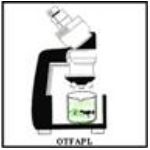ENRM 2003 Course Projects
The Components of the ENRM 2003 Project Activity will be as follows:
- The Group Members
- The Objectives: to develop a “Neo-tropical Animal Factsheet” for the species assigned to the Group
- The Activities in the development of the “Neo-tropical Animal Factsheret” for Marks [10%]
- The Group Development Plan
- The First Draft
- The Second Draft
- The Third Draft
- The above will be based on the on line interaction with Miss. Stacey Syne and Dr. Alexander Nikov
- Elements of this project are worth:
- The Presentation [5%]
- The Formal Electronic Report [20%]
For your ENRM 2003 Fact Sheet project, the class will be divided into the following Neo-tropical Animal groupings as follows:
- Group #1 Pawi [Pipile pipile/Aburria pipile]
- Group #2 Lappe/Labba [Agouti paca]
- Group #3 Red Brocket Deer [Mazama americana]
- Group #4 Cocrico [Ortalis ruficauda]
- Group #5 Red Howler Monkey [Alouatta sp. A. macconnelli, A. seniculus]
- Group #6 Scarlet Ibis [Eudocimus ruber]
- Group #7 Boa constrictor [Boa constrictor constrictor]
- Group #8 Coral Snakes of Trinidad and Tobago, Small and Large Corals [Micrurus circinalis, Micrurus leminscatus diutius]
- Group #9 Tyra/Hi Woods Dog/Chien Bois [Eira barbara]
- Group #10 Blue Crab [Cardisoma guanhumi]
- Group #11 Alligator/Specacled Caiman [Caiman sclerops]
- Group #12 The Emperor Butterfly [Morpho peleides]
- Group #13 The Pit Vipers of Trinidad Mapepire Balsain or Fed de Lance [Brothrops atrox], Mapepire Zanana/Pineapple Snake/Bush Master [Lachesis muta muta]
- Group #14 Mangrove oyster [Crassostrea gasar]
- Group #15 Matte/Tegu/Gold Tegu [Tupinambis teguixin]
- Group #16 The Green Hermit Hummingbird [Phaethornis guy]
- Group #17 Land Prawns/River Shrimps [Macrobrachium sp.]
- Group #18 Ocelot [Felis pardalis]
- Group #19 Cooks Tree Boa [Corallus sp.]
- Group #20 Rainbow Boa [Epicrates cenchria]
You will be required to produce an electronic presentation using the format in the Fact Sheet link below. Your presentation must include text, flowcharts, pictures and video clips.
Fact Sheet AGLS 6502/ ENRM 2003
For the Neo-tropical Animal Conservation, Production and Utilization [CPU] Fact Sheet topics will cover:
- Species Scientific Name/s
- Common Names
- By Countries in Latin America
- By CARICOM Countries
- Photos and Video Clips of these animals
- IUCN Conservation Status
- CITES Status
- Status of Knowledge on the Animal’s Biology and Ecology [and the Factors affecting the Animal’s Production]
- Digestive System and Physiology [Digestion, Feeds and Feeding]
- Reproductive System and Physiology [Reproduction, Breeding and Genetics]
- Animal Health and Diseases [Health and Diseases]
- Housing and Environmental Requirements [Housing and Environment]
- Animal Psychology and Behavior [Behavior]
- Economic Value of the Animals [Economic and Marketing]
- Conservation Strategies for this Species [CONSERVATION]
- Knowledge on Intensive Production Models [PRODUCTION]
- Present Methods of Utilization [UTILIZATION]
- Products from these Animals
- Zoos and Institutions where these animals are featured
- How are these animals used in the Educational System?
- Unique Features of These Animals
- Opportunities that these animals can create
- Cautions or Warnings about these animals
- Locations where these animals are being conserved and produced in Trinidad and Tobago or Latin America and the Caribbean
- References - Experts on the Animals
- References and Sources of Information
